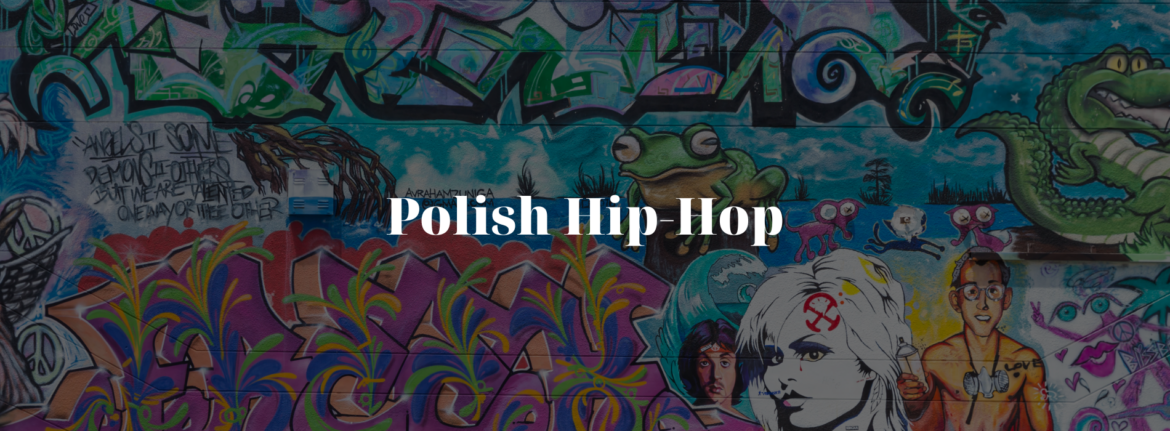Polish hip-hop has emerged as one of the most influential and dynamic genres in the country’s music scene, transcending cultural boundaries to become a voice for the Polish youth. From its underground beginnings to mainstream success, hip-hop in Poland has evolved, carrying with it messages of social struggle, identity, and resilience. Inspired by American hip-hop, Polish artists have made the genre their own, addressing unique themes relevant to the Polish experience.
The Beginnings of Polish Hip-Hop
The origins of Polish hip-hop trace back to the early 1990s, just after Poland transitioned from communism to democracy. This period brought significant social and economic changes, creating a fertile ground for youth expression through music. Young Poles, influenced by Western culture and particularly American rap music, began experimenting with hip-hop as a medium to discuss their struggles and aspirations in a rapidly changing society.
One of the earliest groups to gain recognition in Poland was Kaliber 44 from Katowice, founded in 1993. Their sound incorporated psychedelic and hardcore influences, which set them apart from American hip-hop. Kaliber 44’s music explored themes of alienation, inner turmoil, and the challenges of life in post-communist Poland. Another influential group, Wzgórze Ya-Pa-3, emerged around the same time in Kielce, marking the beginning of regional hip-hop scenes across Poland.
Paktofonika and the Rise of Social Commentary
The late 1990s marked a pivotal moment for Polish hip-hop, as it began addressing societal issues more directly. One of the most iconic groups of this era was Paktofonika, formed in 1998 by Magik, Rahim, and Fokus. Their music, full of raw emotion and honesty, quickly resonated with Polish youth who were also grappling with societal pressures, personal challenges, and a sense of disillusionment.
Paktofonika’s debut album, Kinematografia (2000), is regarded as one of the most influential Polish hip-hop albums, capturing the struggles and frustrations of Polish youth. Songs like “Jestem Bogiem” (“I Am God”) spoke of inner strength in the face of adversity but also highlighted the mental health struggles young people were facing. Tragically, Magik’s untimely death in 2000 brought an end to Paktofonika’s story but immortalized the group as pioneers who used hip-hop to tell authentic stories of Polish life.
The 2000s: Expanding Horizons
As Polish hip-hop entered the 2000s, it saw a major transformation. The genre began branching out, with artists experimenting with various subgenres and styles, from hardcore rap to more commercial sounds. This era also saw the rise of new voices who would shape Polish hip-hop’s identity and take it to the mainstream. Artists like O.S.T.R., Peja, and Grammatik (featuring Eldo) emerged, each bringing their unique styles and lyrical depth.
O.S.T.R. from Łódź became known for his jazz-infused beats and socially conscious lyrics, often addressing issues like poverty, corruption, and the struggles of the working class. His work provided a blend of old-school sensibility with contemporary themes, appealing to a wide range of fans. Peja, from Poznań, also became a prominent figure, with gritty storytelling that portrayed life on the streets and the realities of urban Poland. Known for his unfiltered and confrontational style, Peja’s lyrics spoke to many young people who felt marginalized or disconnected from mainstream society.
The influence of American hip-hop remained strong, but Polish artists continued to make the genre their own, infusing local slang, cultural references, and addressing the specific challenges of life in Poland. Albums like Grammatik’s Światła Miasta (2000) and Peja’s Na Legalu? (2001) reflected a broadening scope of Polish hip-hop, with themes of self-identity, resilience, and the pursuit of freedom.
Polish Hip-Hop in the Mainstream
By the 2010s, hip-hop had cemented its place as one of Poland’s most popular music genres. The genre became a dominant force in Polish pop culture, with numerous artists topping the charts, selling out concerts, and building large fan bases. Artists such as Taco Hemingway and Quebonafide played a significant role in bringing hip-hop to a mainstream audience, crafting clever and relatable lyrics that appealed to a generation coming of age in a globalized, digital world.
Taco Hemingway’s music, for instance, explores themes of modern Polish life, touching on issues like consumerism, relationships, and the pressures of social media. His introspective and often humorous style made hip-hop more accessible to a broader audience, moving away from its traditionally gritty image. Quebonafide’s adventurous and genre-blending approach introduced new sounds and themes to Polish hip-hop, further expanding its reach.
Today’s Polish Hip-Hop Scene
Polish hip-hop has continued to grow in recent years, diversifying its sound and attracting an even broader audience. Newer artists like Mata and Sobel represent the genre’s evolution, bringing innovative styles and exploring themes relevant to Poland’s younger generation. Mata, for instance, gained popularity for his sharp critiques of the Polish education system and societal expectations, appealing to young fans who relate to his experience.
Moreover, hip-hop festivals such as Polish Hip-Hop Festival in Płock have become major events, attracting thousands of fans and featuring both established and emerging artists. These gatherings are a testament to hip-hop’s lasting impact on Polish culture and its ability to unite people across generations.
The Enduring Impact of Polish Hip-Hop
From its underground roots to its mainstream success, Polish hip-hop has carved out a unique space in the country’s cultural landscape. Over the decades, it has become a platform for social commentary, a voice for those on the fringes, and a unifying force for Polish youth. What started as a borrowed genre has evolved into a uniquely Polish expression of identity, struggle, and resilience, proving that hip-hop’s universal themes can thrive in any cultural setting. With its ever-growing popularity, Polish hip-hop continues to adapt and evolve, reflecting the pulse of the nation and resonating with listeners far beyond Poland’s borders.
As Polish hip-hop artists continue to innovate, they are likely to keep pushing boundaries, finding new ways to express the hopes, fears, and dreams of their listeners, ensuring the genre remains as vital and relevant as ever.
